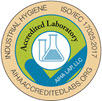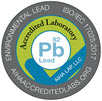Offgassing Products Emissions Testing
Offgassing Product Emissions



Request Info
Offgassing (also known as outgassing) refers to the release of chemicals from various substances under normal conditions of temperature and pressure and takes a variety of forms. Offgassing is potentially harmful and is a concern for some people.
An example of this is when an area is painted, varnished, or stained; a strange scent often lingers for a few days. This is offgassing, and the strange scent is caused by VOC’s, some of which are potentially hazardous. If these chemicals are inhaled or absorbed through the skin, it can be very harmful.
Offgassing is a special issue of concern when it takes place in an enclosed environment. The enclosed space concern also explains why people are told to open windows and doors after painting, to help the room dry and to keep the space ventilated.
A greater concern of outgassing is chemicals which do not have odors. Some of these chemicals are very dangerous, and can cause immediate health effects as well as long term damage. However, it is possible to use specialized chemical sniffers to search for such chemicals in the air; sniffers can determine the levels of these chemicals to see how dangerous they are. Offgassing can also be harmful to the environment.
Dangerous levels of offgassing, in some cases have been linked to cheap building materials. The inexpensive portable classrooms used by many school districts as a temporary measure to accommodate growing student bodies have been linked with health problems caused by the offgassing of chemicals like formaldehyde. Levels of offgassing tend to be very high in these structures because of the materials used as fire retardants. These materials are designed to make portable classrooms safer for students and teachers, and sometimes the manufacturer is unaware of these hidden dangers.
 Order Sampling Supplies
Order Sampling Supplies Request Pricing
Request Pricing Technical Questions
Technical Questions 24/7 Account Access
24/7 Account Access Email Us
Email Us







